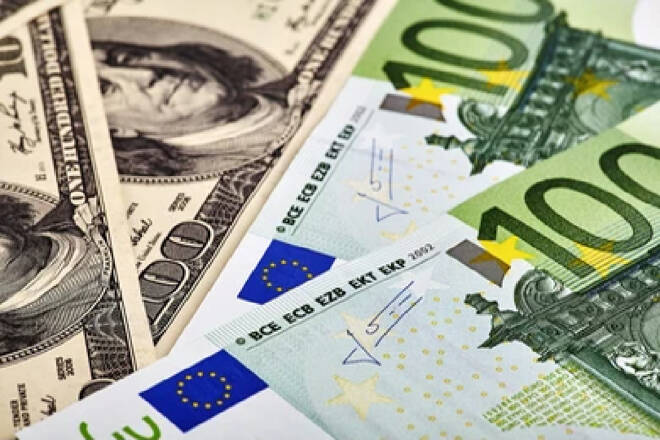Advertisement
Advertisement
EUR/USD Forecast: The US Core PCE Price Index to Impact Fed Interest Rate Outlook
By:
US personal income, inflation, and spending data to steer near-term EUR/USD dynamics—investor anticipation mounts.
Highlights
- The EUR/USD declined by 0.04% on Thursday, ending the session at $1.05621.
- On Friday, euro area consumer confidence and ECB survey-based figures will draw investor interest.
- US personal income, inflation, and personal spending will likely influence near-term EUR/USD trends.
Thursday Overview
The EUR/USD declined by 0.04% on Thursday. Following a 0.22% loss on Wednesday, the EUR/USD ended the day at $1.05621. The EUR/USD rose to a high of $1.05692 before falling to a low of $1.05211.
French and Italian Consumer Confidence in Focus Before the US Session
On Friday, consumer confidence figures from France and Italy will draw investor interest. Economists forecast French consumer confidence to hold steady at 83 and Italian consumer confidence to ease from 96.4 to 96.0.
An unexpected slide in consumer confidence would signal a likely fall in consumption. Private consumption accounts for over 50% of the Eurozone economy. A weak consumption outlook would align with expectations of a Eurozone economic recession.
From the ECB, the Survey of Professional Forecasters also warrants consideration. The ECB survey canvases experts from financial and non-financial institutions for inflation, GDP, and unemployment forecasts.
Weaker forecasts would support the ECB’s monetary policy and weaker growth outlook.
US Personal Spending, Inflation, and Personal Income in the Spotlight
On Friday, the US economy will be in the spotlight again. Personal spending, Core PCE Price Index, and personal income figures could influence sentiment toward Fed monetary policy.
Economists forecast a more marked increase in personal spending and a steady rise in personal income for September. Significantly, economists predict the Core PCE Price Index to increase by 3.7% vs. 3.9% in August.
Hotter-than-expected figures could fuel bets on a December Fed rate hike. A rise in personal income would signal an upward trend in disposable income, supporting consumption. A positive consumption outlook may fuel demand-driven inflationary pressures, forcing the Fed to raise interest rates. Higher interest rates would impact disposable income, subduing consumption.
Short-Term Forecast:
Near-term trends for the EUR/USD hinge on the US inflation, personal income, and personal spending figures. Stronger-than-expected data could shift the monetary policy focus toward the US dollar, potentially leading to a decline in EUR/USD below $1.05.
EUR/USD Price Action
Daily Chart
The EUR/USD hovered below the 50-day and 200-day EMAs, sending bearish price signals.
A EUR/USD return to $1.06 could support a move to the $1.06342 resistance level and the 50-day EMA. Softer-than-expected US inflation and personal spending figures would fuel demand for the EUR. However, hotter-than-expected numbers from the US and a pullback in euro area consumer confidence would impact the EUR.
A EUR/USD break below the trend line and the $1.05173 support level would give the bears a run at sub-$1.05.
The 14-period Daily RSI, 46.44, suggests a EUR/USD fall through the trend line and $1.05173 support level before entering oversold territory.
4-Hour Chart
The EUR/USD remains below the 50-day and 200-day EMAs, affirming bearish price signals.
A EUR/USD breakout from the 50-day EMA could give the bulls a run at the 200-day EMA and $1.06342 resistance level.
However, a break below the trend line and $1.05173 support level would support a drop below $1.05.
The 14-period RSI on the 4-hour chart, 47.11, indicates a EUR/USD fall through the trend line before entering oversold territory.
About the Author
Bob Masonauthor
With over 28 years of experience in the financial industry, Bob has worked with various global rating agencies and multinational banks. Currently he is covering currencies, commodities, alternative asset classes and global equities, focusing mostly on European and Asian markets.
Advertisement
